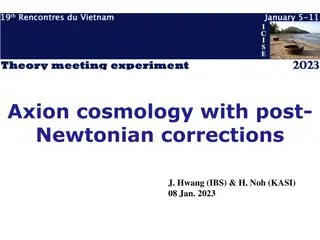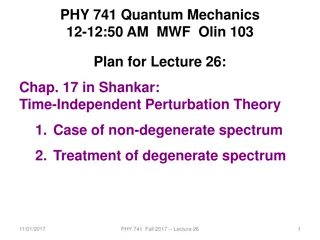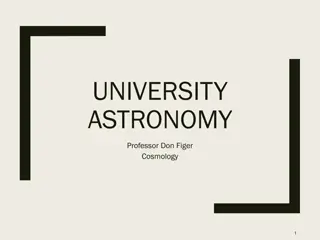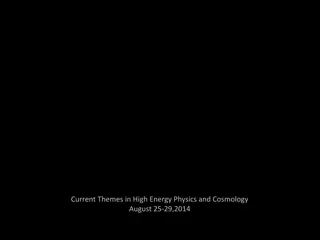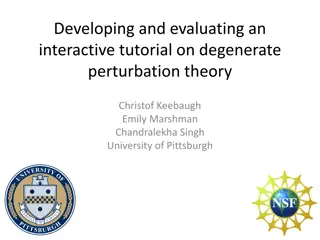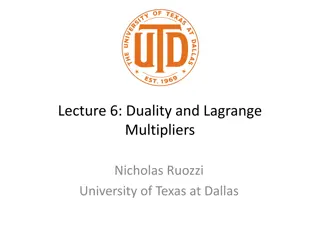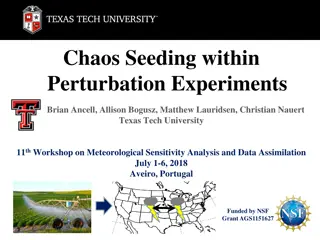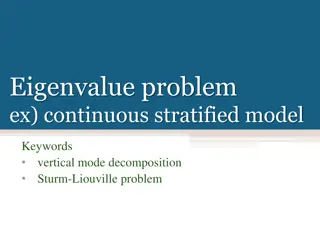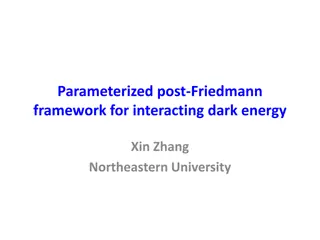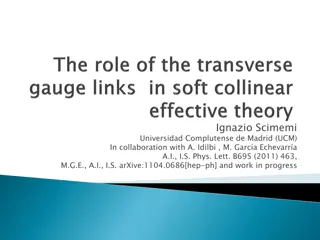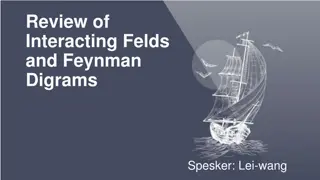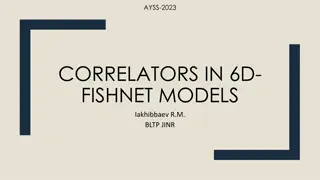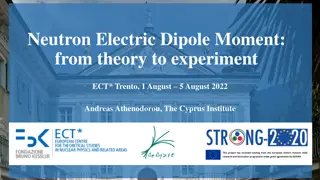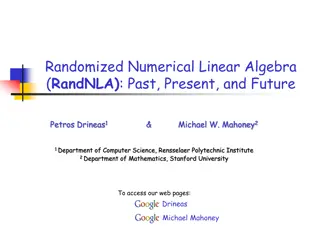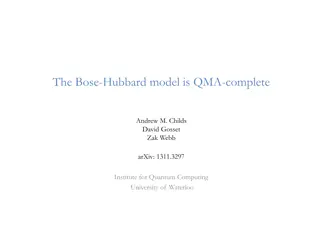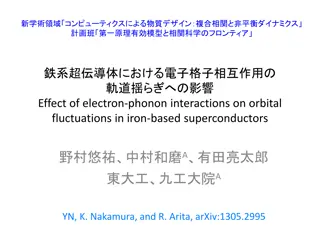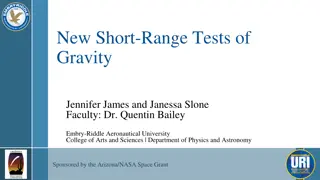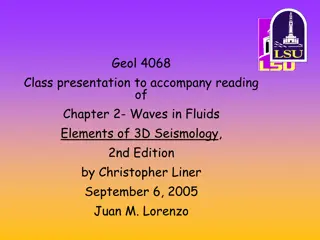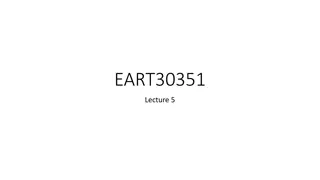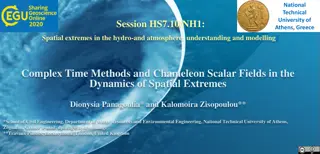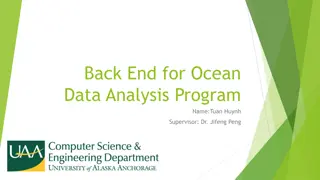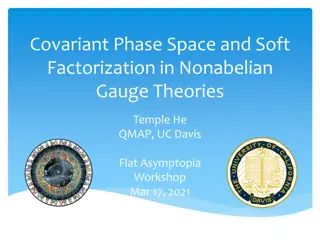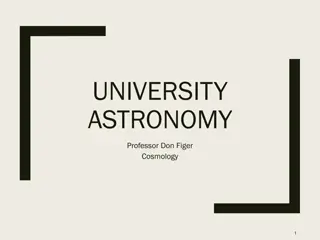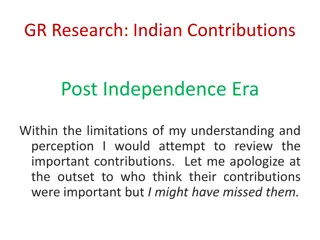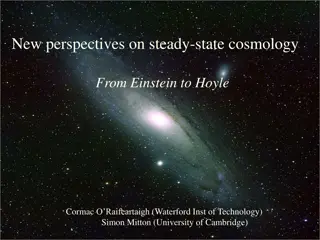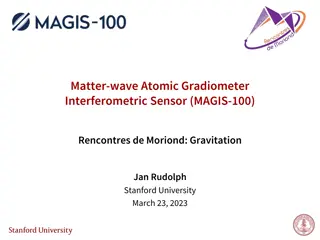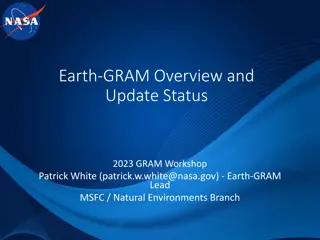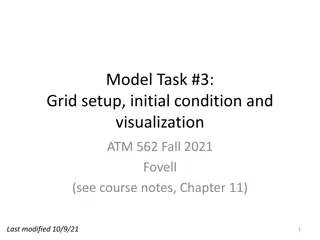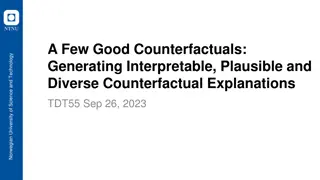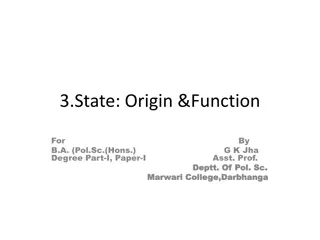Lagrangian Perturbation Theory: Applications in Cosmology
Lagrangian Perturbation Theory (LPT) offers solutions for general dark energy models and is crucial for upcoming large-scale surveys. It provides a method to displace particles at large scales efficiently. While Standard Perturbation Theory (SPT) is limited at linear order, LPT overcomes its drawbacks and offers better results at high redshifts. LPT finds applications in predicting cosmological dependencies, weak lensing, bispectrum analysis, halo bias, and the two-point correlation function, among others.
Download Presentation

Please find below an Image/Link to download the presentation.
The content on the website is provided AS IS for your information and personal use only. It may not be sold, licensed, or shared on other websites without obtaining consent from the author. Download presentation by click this link. If you encounter any issues during the download, it is possible that the publisher has removed the file from their server.
E N D
Presentation Transcript
Lagrangian Perturbation Theory : 3rdorder solutions for general dark energy models Seokcheon Lee ( ) Korea Institute for Advanced Study ( ) Feb. 12th. 2014 based on : arXiv/1401.2226
Outline Why do we need LPT? Analytic Perturbation Theories Standard Perturbation Theory (SPT) LagrangianPerturbation Theory (LPT) Application Matter power spectrum Two point correlation function Third order solutions for general DE models Future works
Why do we need LPT? Upcoming large-scale surveys (LSST & Euclid) requires huge number of mock catalogs to estimate covariance matrix N-body simulations : accurate, numerically expensive Semi-analytic methods (PThalos, PINOCCHIO, COLAR) : fast, inaccurate : using LPT to displace particles at large scales
Analytic Perturbation Theories Standard Perturbation Theory (SPT) Both background evolution and perturbed quantities are required to study Large scale structure (LSS) Linear theory well describes LSS in linear regime
SPT II There s no reason to stop at linear order Problems : convergences of an expansion are not clear, diverge at large k (cannot do FT), confined in real space
Lagrangian Perturbation Theory (LPT) In LPT, a fundamental variable to represent perturbation is a displacement field, S First order LPT : Zel dovich approximation Initial conditions for N-body simulations are open generated using ZA or 2ndorder LPT LPT can overcome problems of SPT
LPT II Drawbacks of LPT Successful at high redshifts but poor results at late times due to shell crossing Power in small scales is suppressed Multiple streams through same Eulerian position Before shell crossing, the system described by a velocity field
Applications Predictions for cosmological dependence (including m , , etc) on (quasi-linear) power spectrum Weak lensing Bispectrum Halo bias Two point correlation function (BAO)
Third order solutions : for general dark energy models Goal So far one uses EdS universe approximation for the time dependence part of solutions Thus, one investigates 2pt CF or PS for CDM model with this assumption This is self inconsistent and can t be used for the cosmological model different from CDM One needs to improve this in order to predict DE dependence on those observable
Future works Adopt the correct higher order solutions to power spectrum (in progress) Using these solutions in the 2pt correlation function to forecast BAO signals (in progress) Also check the prediction for WL



